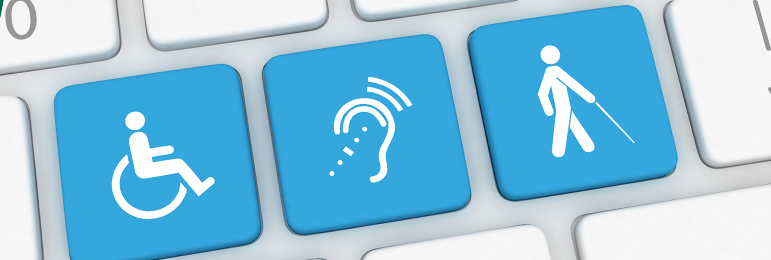As Close As We Can Get to “Accessible”
 InclusiveDocs
InclusiveDocs
While complying with WCAG (Web Content Accessibility Guidelines) standards is one thing, making a website completely usable is another, and it might not be that simple. It is wrong to say that accessibility is just about disabilities. The aim of accessibility should be to make websites and apps that are usable by as many people in as many contexts as possible.
Every day and in every aspect of life, many of us take things for granted. To the average able-bodied person, using the internet and accessing websites easily is taken for granted, but the reality is far more difficult for many people with disabilities.
While there have been great strides taken to develop guidelines and standards that businesses should comply with to make their digital products as accessible as possible, huge gaps in providing web accessibility broadly continue, hindering huge numbers of the world’s population from having equal access to information and services.
According to the World Health Organization, approximately 15 percent of the world’s population live with some form of disability, and about three percent of this group experience significant difficulties in functioning. Web accessibility for everyone is vital, and true useability should be the goal.
Fundamentally, true usability means equal access to all content, transactions and merchandise on a website in an app or a digital publication, regardless of the user’s ability. This goal has been made easier by the Americans With Disabilities Act guidelines, and the concept of universal design across platforms is becoming mainstream. Equivalent accommodation should be the ultimate goal.
The difference between compliance and accessibility should be noted and addressed. There is a big difference between simply providing alternative text for an image and making sure that the text provides the user with a complete experience of the image and the context in which it appears. Alt text should provide the user with the same value as a user who can view the image without accommodation.
Keyboard accessibility is one of the most important aspects of web accessibility, yet it is not well understood at this time. Many people with motor disabilities rely on a keyboard instead of a mouse, and blind users also typically find using a keyboard easier for navigation. There are many other scenarios where the use of a mouse is not feasible. Some people have tremors that don’t allow for fine muscle control. Others have little or no use of their hands. Some people simply do not have hands. The list is long.
Subscribe to my newsletter
Read articles from InclusiveDocs directly inside your inbox. Subscribe to the newsletter, and don't miss out.
Written by
